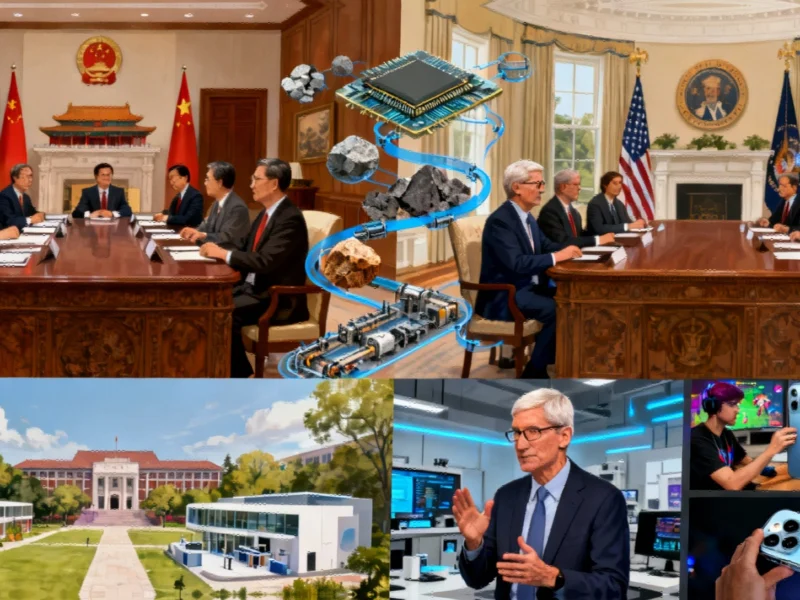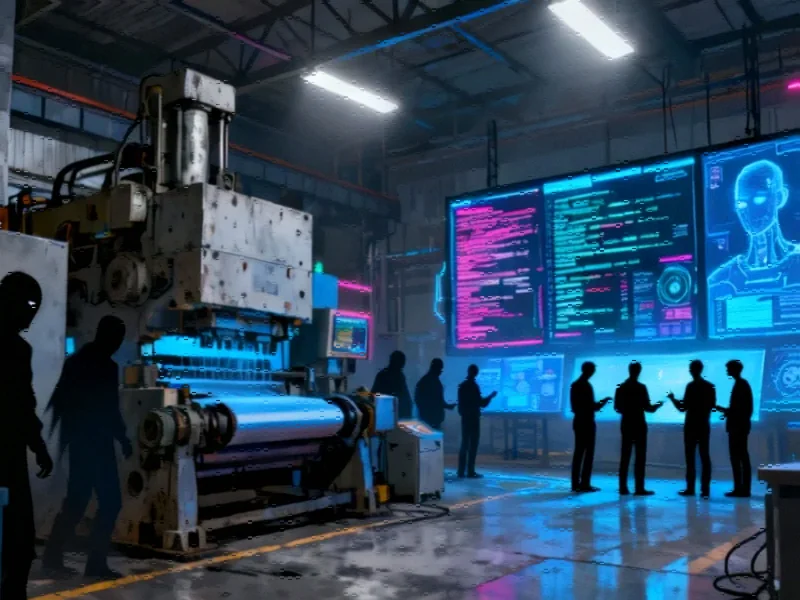In a strategic dance between the world’s two economic superpowers, Apple CEO Tim Cook has made significant investment commitments on both sides of the Pacific, highlighting the delicate position global technology giants face amid escalating U.S.-China tensions. As Apple navigates complex geopolitical pressures, the company finds itself balancing manufacturing dependencies with political expectations in an increasingly divided technological landscape.
During meetings with Chinese officials in Beijing this week, Cook pledged to increase Apple’s investment in China, which remains the company’s most critical manufacturing hub and second-largest market after the United States. This commitment comes just weeks after his White House meeting with President Trump, where he promised $100 billion in additional U.S. investment and discussed bringing more supply chain operations and advanced manufacturing back to American soil.
The Manufacturing Conundrum
Apple’s dual investment strategy reflects the broader challenges facing multinational corporations caught in the crossfire of technological competition between Washington and Beijing. While the company has diversified some iPhone production to Vietnam, Thailand, and India, the overwhelming majority of its flagship devices still roll off assembly lines in China’s “iPhone city” in Zhengzhou, where Foxconn operates massive production facilities built up through years of government support including infrastructure development and tax incentives.
The company’s manufacturing reliance on China shows little sign of diminishing, despite geopolitical headwinds. A recent investigation by labor advocacy group China Labor Watch revealed that approximately 200,000 workers were employed in Zhengzhou during the peak production period for the iPhone 17, underscoring the scale of Apple’s operational footprint in the country.
Market Pressures and Consumer Dynamics
Apple faces increasing competitive pressure in the Chinese smartphone market, where domestic brands like Huawei, Vivo, and Oppo have been gaining traction among consumers. The company has struggled to maintain its position among China’s top five smartphone sellers over the past two years, even as it continues to command loyalty from premium segment buyers.
Recent government stimulus measures have presented additional challenges. China’s smartphone subsidy program, launched in January to boost consumer spending, excludes most iPhone models due to their price points exceeding the approximately $840 threshold. Despite this, Apple’s latest releases continue to generate significant interest, with the iPhone 17 Air selling out within minutes when presales opened in China last Friday.
Strategic Engagement Beyond Manufacturing
Beyond manufacturing and retail, Apple has deepened its engagement with China through educational and cultural initiatives. The company recently announced a donation to expand environmental education programs at Tsinghua University, one of China’s premier institutions, though specific financial details weren’t disclosed.
During his Beijing visit, Cook’s itinerary reflected this multifaceted approach. He met with video game designers, visited the set of a music video filmed using the iPhone 17 Pro, and received a custom Labubu doll designed to resemble him during a meeting with Kasing Lung, the creator behind Pop Mart’s popular toy line. These cultural touchpoints demonstrate Apple’s efforts to maintain relevance and goodwill in the Chinese market.
The broader technological context for Apple’s balancing act includes increasing government scrutiny over critical components like semiconductors and rare earth minerals. As advanced imaging technologies continue to evolve and companies like NVIDIA push computing boundaries, control over tech supply chains has become a central battleground in the U.S.-China relationship. This competition extends to financial markets, where regional banking concerns persist alongside technological investments, and institutional portfolios, as evidenced by record-setting university endowments navigating market volatility.
Chinese Commerce Minister Wang Wentao welcomed Apple’s commitment to deeper cooperation and increased investment, according to state media reports. The positive reception from Chinese officials contrasts with the company’s simultaneous commitments to U.S. investment, highlighting Apple’s successful navigation of competing national interests—at least for now. As industrial technology continues advancing across sectors, Apple’s ability to maintain this delicate equilibrium will test both its diplomatic finesse and strategic planning in an increasingly fragmented global technology ecosystem.
Based on reporting by {‘uri’: ‘nytimes.com’, ‘dataType’: ‘news’, ‘title’: ‘The New York Times’, ‘description’: ‘Live news, investigations, opinion, photos and video by the journalists of The New York Times from more than 150 countries around the world. Subscribe for coverage of U.S. and international news, politics, business, technology, science, health, arts, sports and more.’, ‘location’: {‘type’: ‘place’, ‘geoNamesId’: ‘5128581’, ‘label’: {‘eng’: ‘New York City’}, ‘population’: 8175133, ‘lat’: 40.71427, ‘long’: -74.00597, ‘country’: {‘type’: ‘country’, ‘geoNamesId’: ‘6252001’, ‘label’: {‘eng’: ‘United States’}, ‘population’: 310232863, ‘lat’: 39.76, ‘long’: -98.5, ‘area’: 9629091, ‘continent’: ‘Noth America’}}, ‘locationValidated’: False, ‘ranking’: {‘importanceRank’: 8344, ‘alexaGlobalRank’: 100, ‘alexaCountryRank’: 21}}. This article aggregates information from publicly available sources. All trademarks and copyrights belong to their respective owners.



